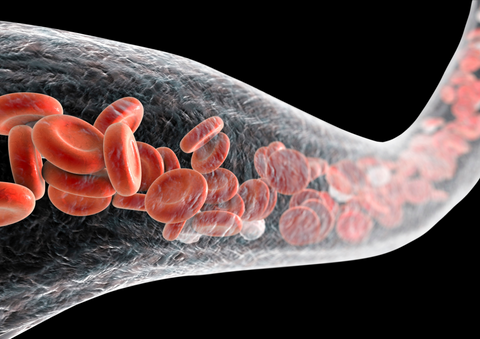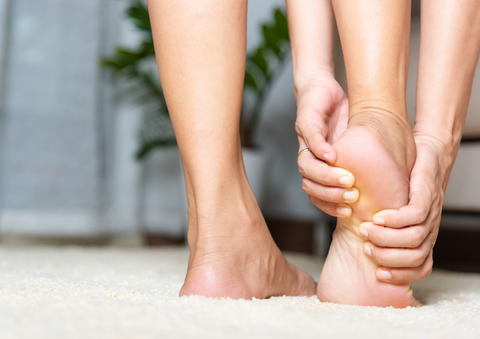Muscle soreness is a common experience, especially after intense physical activity, whether it's a challenging workout, a long run, or a physically demanding task.
Often referred to as delayed onset muscle soreness (DOMS), this discomfort can occur anywhere from 12 to 48 hours after exercise and can range from mild stiffness to severe pain.
While muscle soreness is a normal part of the recovery process, it can be uncomfortable and frustrating.
Understanding the causes of muscle soreness and how to alleviate it can help you recover more quickly and get back to your routine.
In this blog, we’ll explore five effective ways to ease muscle soreness and support your recovery.
Let's dive in!
What Causes Muscle Soreness?
Muscle soreness typically occurs when muscles are subjected to intense or unfamiliar physical stress.
This leads to microscopic damage to muscle fibers, which then become inflamed as the body works to repair them.
The process of muscle recovery can cause discomfort, and while some soreness is normal, it can be exacerbated by factors such as overuse, poor form, or lack of proper warm-up and cool-down routines.
Now, let’s explore five ways to ease muscle soreness and promote faster recovery.
5 Ways to Ease Muscle Soreness
1. Take a Nitric Oxide Powder
One of the most effective ways to ease muscle soreness and improve recovery is by taking a nitric oxide (NO) powder supplement.
Nitric oxide is a powerful vasodilator, meaning it helps widen blood vessels and improve blood flow.
This increased circulation delivers more oxygen and nutrients to muscles, accelerating the repair process and reducing muscle fatigue.
We created Nitrox 40 with the intention to support muscle soreness and maximize recovery.
As it boosts the body’s nitric oxide (N-O) production, Nitrox 40 can support widening of blood vessels and enhance blood flow throughout the body.
With ingredients like organic beet root powder, mango fruit powder, and red spinach, Nitrox 40 supports healthy blood pressure, boosts energy and stamina, and promotes microcirculation to even the smallest capillaries.
Simply take just one delicious scoop a day and you're good to go!
|
2. Apply Heat or Cold Therapy
Heat and cold therapy can significantly reduce muscle soreness and inflammation.
Cold therapy, such as ice packs or cold compresses, helps reduce swelling and numbs the affected area, providing immediate relief from pain.
Heat therapy, on the other hand, increases blood flow to the muscles, helping to relax them and improve flexibility.
Alternate between cold and heat treatments after intense exercise to relieve soreness and speed up muscle recovery.
This combination can help reduce stiffness and keep your muscles comfortable.
3. Stretching and Foam Rolling
Stretching and foam rolling are essential parts of any post-workout recovery routine.
Gentle stretching helps release tension in the muscles, improves flexibility, and reduces stiffness.
Foam rolling, or self-myofascial release, helps break up muscle knots and fascia, promoting better blood flow and reducing soreness.
These practices help alleviate tightness and discomfort while also improving mobility, making it easier for you to stay active and recover from muscle soreness.
4. Stay Hydrated
Hydration is crucial for muscle recovery.
Dehydration can lead to muscle cramping, increased soreness, and slower recovery.
Drinking water throughout the day helps replenish lost fluids and ensures that your muscles remain properly hydrated.
Additionally, staying hydrated helps flush out toxins from the body, aiding in the recovery process.
Electrolyte drinks or coconut water can also help restore the minerals lost during exercise, supporting better muscle function and reducing soreness.
5. Get Adequate Rest and Sleep
Rest and sleep are essential for muscle recovery.
When you sleep, your body produces growth hormones that aid in tissue repair and muscle regeneration.
Inadequate rest can prolong recovery time and lead to prolonged soreness.
Make sure to get 7-9 hours of quality sleep each night to allow your body to repair muscle fibers and reduce inflammation.
Additionally, taking rest days between intense workouts can help prevent overuse injuries and reduce the chances of experiencing excessive muscle soreness.
Ease Muscle Soreness
Muscle soreness is a normal part of the recovery process, but it doesn’t have to be debilitating.
By incorporating strategies such as taking a nitric oxide powder supplement, using heat and cold therapy, stretching and foam rolling, staying hydrated, and getting enough rest, you can speed up your recovery and reduce soreness.
These practices help improve circulation, reduce inflammation, and promote muscle repair, allowing you to feel better and return to your workouts sooner.
If muscle soreness persists or becomes more intense, consider consulting with a healthcare provider to rule out underlying issues.
With the right approach, you can ease muscle soreness and keep your body feeling strong and healthy.
Thank you for reading!




